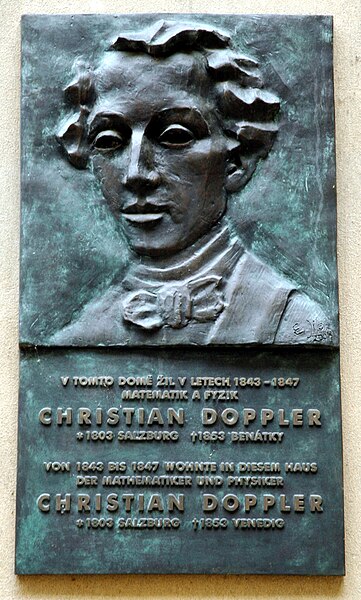Christian Andreas Doppler was an Austrian mathematician and physicist. He formulated the principle – now known as the Doppler effect – that the observed frequency of a wave depends on the relative speed of the source and the observer.
Christian Doppler
Doppler's birth house in the Makart square in Salzburg, just next door to where Mozart's family had lived. A Doppler research and memorial society is now housed there.
Plaque on the house in Prague in which Doppler lived from 1843 to 1847
The Doppler effect is the change in the frequency of a wave in relation to an observer who is moving relative to the source of the wave. The Doppler effect is named after the physicist Christian Doppler, who described the phenomenon in 1842. A common example of Doppler shift is the change of pitch heard when a vehicle sounding a horn approaches and recedes from an observer. Compared to the emitted frequency, the received frequency is higher during the approach, identical at the instant of passing by, and lower during the recession.
Experiment by Buys Ballot (1845) depicted on a wall in Utrecht (2019)
U.S. Army soldier using a radar gun, an application of Doppler radar, to catch speeding violators.
Colour flow ultrasonography (Doppler) of a carotid artery – scanner and screen






